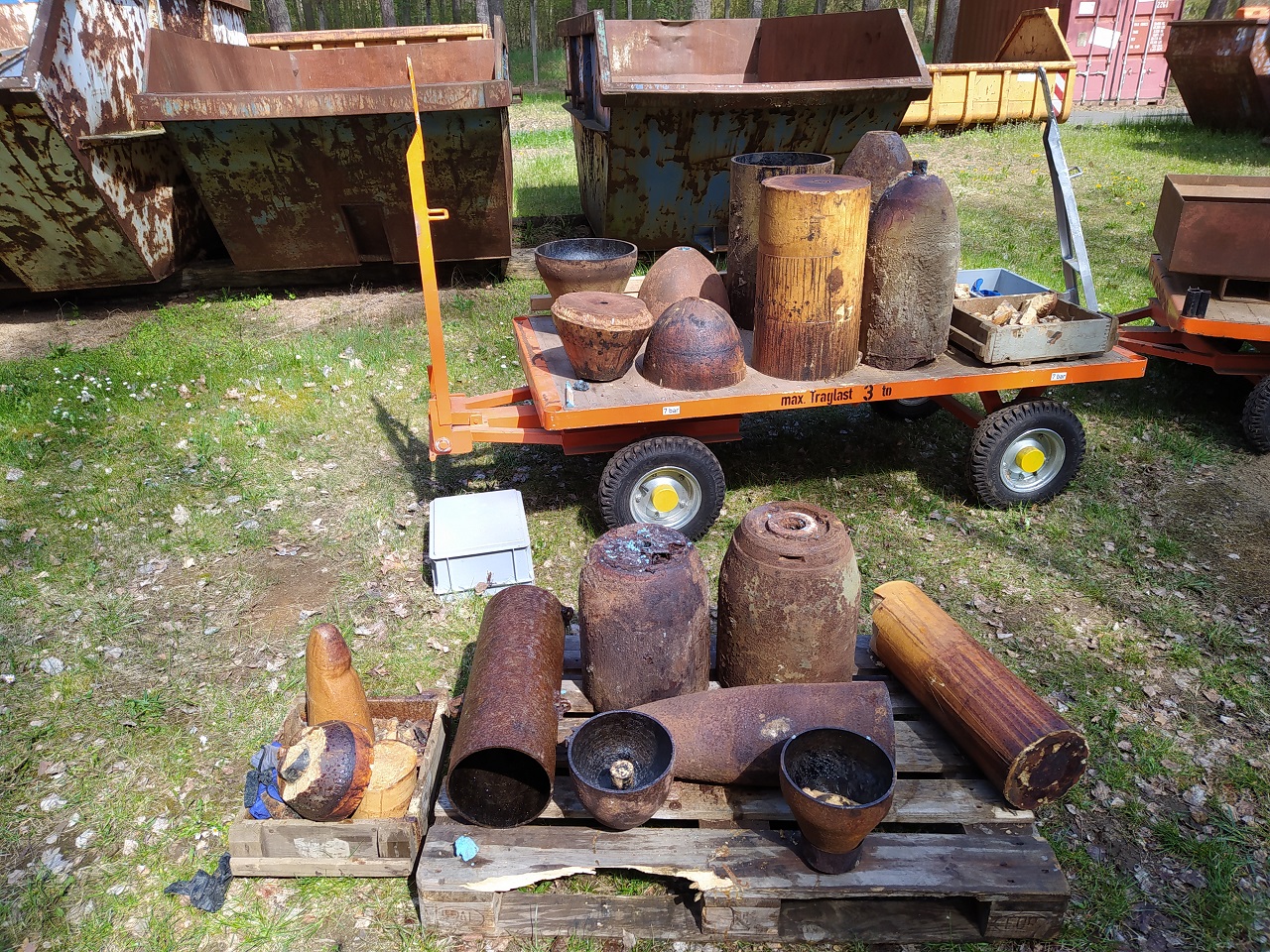Rebuilding Ukraine – Resilient and Sustainable


Motivation
Europe has been struggling with the legacy of the world wars for over 70 years and will continue to do so for decades to come, particularly in the North and Baltic Seas, unless a technological revolution increases efficiency by orders of magnitude. Something similar will happen in Ukraine. Every month of war results in the need for a year of munitions clearance and destruction. Disposal is currently time-consuming manual work. For example, a ten-centner explosive bomb is cut into up to 15 pieces using a band saw. The explosives are then thermally disposed of by hand without separating them from the metal shell. In total, the dismantling process takes many hours. In Germany, this leads to a gradual increase in stock levels at disposal companies. In addition, disposal is dangerous and regularly leads to fatal accidents at work. A technological leap in disposal is therefore absolutely essential in order to deal with the situation within a reasonable time frame. In addition to the area of application addressed in Ukraine, secondary recycling in Germany and other regions is also helpful.
In terms of the ecologically safe disposal of ammunition remnants, we believe that this is the innovation approach with the highest potential
Aims and Procedure
The technology has social, ecological and economic benefits. Ecological disposal of explosive ordnance, as opposed to conventional blasting on land and in water, prevents the release of carcinogenic substances and nitrate compounds into the environment, thereby protecting the respective habitats and their biodiversity. These direct effects also have an indirect impact on the health of people living there via the food chain.
Explosives are sensitive to temperature and impact. The current method poses a high risk of impact due to multiple sawing and, if necessary, mechanical expulsion. In contrast, the new method uses only one saw cut and removes the explosives using a thermal process. The inductive heating of the metal shell causes the explosive to melt at the contact point and expels the explosive in solid form with the help of gravity. By monitoring and controlling the temperature, the heating can be reduced to the necessary level and the potential danger minimized. Compared to the state of the art, the delaboration time can be reduced to a tenth. The risk potential is also significantly reduced by reducing the number of saw cuts and temperature control.
The technology was developed in cooperation with commercial explosive ordnance disposal companies in properties belonging to competent authorities.
Perspectives and Innovations
For Fraunhofer, the mission is usually over with TRL6. The obligatory industrial transfer has so far failed due to guaranteed disposal orders from politicians and the availability of a deployable disposal facility for technology demonstration. With this project, all two showstoppers can be overcome. Currently, and with a high probability of a solution to the Ukraine war, increased clearance and disposal activities in Ukraine financed by the international community can be expected in the future. With the availability of a mobile technology demonstrator, a deployable demonstrator is available for testing and training purposes, which can serve as a blueprint for industrial series systems. According to our own estimates, there is a need for up to 100 dismantling facilities worldwide.
 Fraunhofer Institute for Material and Beam Technology IWS
Fraunhofer Institute for Material and Beam Technology IWS